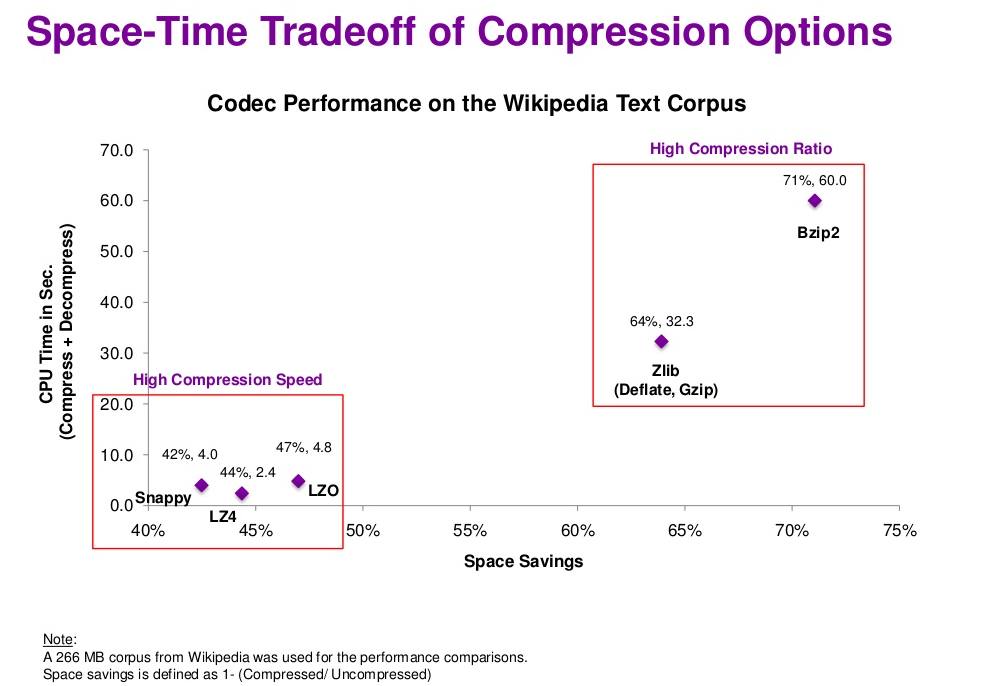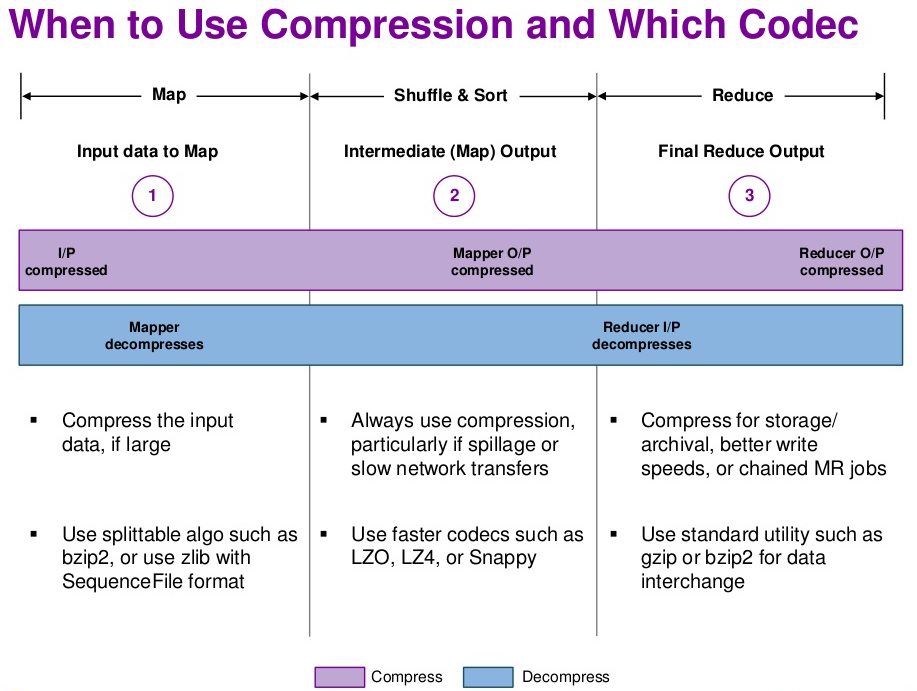说明:本文使用的Hadoop版本是2.6.0,示例语言用Python。
概述
Hadoop Streaming是Hadoop提供的一种编程工具,提供了一种非常灵活的编程接口, 允许用户使用任何语言编写MapReduce作业,是一种常用的非Java API编写MapReduce的工具。
调用Streaming的命令如下(hadoop-streaming-x.x.jar不同版本的位置不同):
$ ${HADOOP_HOME}/bin/hadoop jar ${HADOOP_HOME}/share/hadoop/tools/lib/hadoop-streaming-2.6.0.jar \
-input <输入目录> \ # 可以指定多个输入路径,例如:-input '/user/foo/dir1' -input '/user/foo/dir2'
-inputformat <输入格式 JavaClassName> \
-output <输出目录> \
-outputformat <输出格式 JavaClassName> \
-mapper <mapper executable or JavaClassName> \
-reducer <reducer executable or JavaClassName> \
-combiner <combiner executable or JavaClassName> \
-partitioner <JavaClassName> \
-cmdenv <name=value> \ # 可以传递环境变量,可以当作参数传入到任务中,可以配置多个
-file <依赖的文件> \ # 配置文件,字典等依赖
-D <name=value> \ # 作业的属性配置
注意:-file是一个deprecated的配置,可以使用-files。
常见的作业属性
| 属性 | 新名称 | 含义 | 备注 |
|---|---|---|---|
| mapred.job.name | mapreduce.job.name | 作业名称 | |
| mapred.map.tasks | mapreduce.job.maps | 每个Job运行map task的数量 | map启动的个数无法被完全控制 |
| mapred.reduce.tasks | mapreduce.job.reduces | 每个Job运行reduce task的数量 | |
| mapred.job.priority | mapreduce.job.priority | 作业优先级 | VERY_LOW,LOW,NORMAL,HIGH,VERY_HIGH |
| stream.map.input.field.separator | Map输入数据的分隔符 | 默认是\t | |
| stream.reduce.input.field.separator | Reduce输入数据的分隔符 | 默认是\t | |
| stream.map.output.field.separator | Map输出数据的分隔符 | 默认是\t | |
| stream.reduce.output.field.separator | Reduce输出数据的分隔符 | ||
| stream.num.map.output.key.fields | Map task输出record中key所占的个数 | ||
| stream.num.reduce.output.key.fields | Reduce task输出record中key所占的个数 |
注意:2.6.0的Streaming文档中只提到了stream.num.reduce.output.fields, 没提到stream.num.reduce.output.key.fields,后续需要看下二者的关系。
stream开头的是streaming特有的,mapred.map.tasks和mapred.reduce.tasks是通用的
基本原理
Hadoop Streaming要求用户编写的Mapper/Reducer从标准输入(stdin)中读取数据,将结果写入到标准输出(stdout)中, 这非常类似于Linux的管道机制。
正因此,我们在linux本地方便对Streaming的MapReduce进行测试
$ cat <input_file> | <mapper executable> | sort | <reducer executable>
# python的streaming示例
$ cat <input_file> | python mapper.py | sort | python reducer.py
WordCount示例
准备数据
自行替换其中的<username>
$ cat input/input_0.txt
Hadoop is the Elephant King!
A yellow and elegant thing.
He never forgets
Useful data, or lets
An extraneous element cling!
$ cat input/input_1.txt
A wonderful king is Hadoop.
The elephant plays well with Sqoop.
But what helps him to thrive
Are Impala, and Hive,
And HDFS in the group.
$ cat input/input_2.txt
Hadoop is an elegant fellow.
An elephant gentle and mellow.
He never gets mad,
Or does anything bad,
Because, at his core, he is yellow.
$ ${HADOOP_HOME}/bin/hadoop fs -mkdir -p /user/<username>/wordcount
$ ${HADOOP_HOME}/bin/hadoop fs -put input/ /user/<username>/wordcount
编写Mapper
#!/bin/env python
# encoding: utf-8
import re
import sys
seperator_pattern = re.compile(r'[^a-zA-Z0-9]+')
for line in sys.stdin:
for word in seperator_pattern.split(line):
if word:
print '%s\t%d' % (word.lower(), 1)
编写Reducer
#!/bin/env python
# encoding: utf-8
import sys
last_key = None
last_sum = 0
for line in sys.stdin:
key, value = line.rstrip('\n').split('\t')
if last_key is None:
last_key = key
last_sum = int(value)
elif last_key == key:
last_sum += int(value)
else:
print '%s\t%d' % (last_key, last_sum)
last_sum = int(value)
last_key = key
if last_key:
print '%s\t%d' % (last_key, last_sum)
使用itertools.groupby的Reducer
#!/bin/env python
# encoding: utf-8
import itertools
import sys
stdin_generator = (line for line in sys.stdin if line)
for key, values in itertools.groupby(stdin_generator, key=lambda x: x.split('\t')[0]):
value_sum = sum((int(i.split('\t')[1]) for i in values))
print '%s\t%d' % (key, value_sum)
示例代码太过简单,应该包含更多的异常处理,否则会导致程序异常退出的。
调试方法
本地测试
前面说过,Streaming的基本过程与linux管道类似,所以可以在本地先进行简单的测试。 这里的测试只能测试程序的逻辑基本符合预期,作业的属性设置
$ cat input/* | python mapper.py | sort | python reducer.py
a 2
an 3
and 4
anything 1
are 1
at 1
bad 1
because 1
but 1
cling 1
core 1
data 1
does 1
elegant 2
element 1
elephant 3
extraneous 1
fellow 1
forgets 1
gentle 1
gets 1
group 1
hadoop 3
hdfs 1
he 3
helps 1
him 1
his 1
hive 1
impala 1
in 1
is 4
king 2
lets 1
mad 1
mellow 1
never 2
or 2
plays 1
sqoop 1
the 3
thing 1
thrive 1
to 1
useful 1
well 1
what 1
with 1
wonderful 1
yellow 2
使用Counter
在mapper中添加统计切词后为空的个数
#!/bin/env python
# encoding: utf-8
import re
import sys
seperator_pattern = re.compile(r'[^a-zA-Z0-9]+')
def print_counter(group, counter, amount):
print >> sys.stderr, 'reporter:counter:{g},{c},{a}'.format(g=group, c=counter, a=amount)
for line in sys.stdin:
for word in seperator_pattern.split(line):
if word:
print '%s\t%d' % (word.lower(), 1)
else:
print_counter('wc', 'empty-word', 1)
Streaming文档中描述打印counter的方法:
How do I update counters in streaming applications?
A streaming process can use the stderr to emit counter information. reporter:counter:<group>,<counter>,<amount> should be sent to stderr to update the counter.
就是向stderr中打印reporter:counter:<group>,<counter>,<amount>的字符串就可以更新counter信息了,非常简单有用的一个工具,对于job的调试和监控非常有帮助。
在集群上运行(reducer个数设置为3)
# 使用-files,注意:-D -files选项放在最前面,放在后面会报错,不懂为何
$ ${HADOOP_HOME}/bin/hadoop jar ${HADOOP_HOME}/share/hadoop/tools/lib/hadoop-streaming-2.6.0.jar \
-D mapred.job.name="streaming_wordcount" \
-D mapred.map.tasks=3 \
-D mapred.reduce.tasks=3 \
-D mapred.job.priority=HIGH \
-files "mapper.py,reducer.py" \
-input /user/<username>/wordcount/input \
-output /user/<username>/wordcount/output \
-mapper "python mapper.py" \
-reducer "python reducer.py"
# output 不同的版本可能输出有所不同 -D这里使用的老配置名,前面会有一些警告,这里未显示
packageJobJar: [mapper.py, reducer.py, /tmp/hadoop-unjar707084306300214621/] [] /tmp/streamjob5287904745550112970.jar tmpDir=null
15/09/29 10:35:14 INFO client.RMProxy: Connecting to ResourceManager at xxxxx/x.x.x.x:y
15/09/29 10:35:14 INFO client.RMProxy: Connecting to ResourceManager at xxxxx/x.x.x.x:y
15/09/29 10:35:15 INFO mapred.FileInputFormat: Total input paths to process : 3
15/09/29 10:35:15 INFO mapreduce.JobSubmitter: number of splits:3
15/09/29 10:35:15 INFO Configuration.deprecation: mapred.reduce.tasks is deprecated. Instead, use mapreduce.job.reduces
15/09/29 10:35:15 INFO mapreduce.JobSubmitter: Submitting tokens for job: job_1440570785607_1597
15/09/29 10:35:15 INFO impl.YarnClientImpl: Submitted application application_1440570785607_1597
15/09/29 10:35:15 INFO mapreduce.Job: The url to track the job: http://xxxxx:yyy/proxy/application_1440570785607_1597/
15/09/29 10:35:15 INFO mapreduce.Job: Running job: job_1440570785607_1597
15/09/29 10:37:15 INFO mapreduce.Job: Job job_1440570785607_1597 running in uber mode : false
15/09/29 10:37:15 INFO mapreduce.Job: map 0% reduce 0%
15/09/29 10:42:17 INFO mapreduce.Job: map 33% reduce 0%
15/09/29 10:42:18 INFO mapreduce.Job: map 100% reduce 0%
15/09/29 10:42:23 INFO mapreduce.Job: map 100% reduce 100%
15/09/29 10:42:24 INFO mapreduce.Job: Job job_1440570785607_1597 completed successfully
15/09/29 10:42:24 INFO mapreduce.Job: Counters: 50
File System Counters
FILE: Number of bytes read=689
FILE: Number of bytes written=661855
FILE: Number of read operations=0
FILE: Number of large read operations=0
FILE: Number of write operations=0
HDFS: Number of bytes read=822
HDFS: Number of bytes written=379
HDFS: Number of read operations=18
HDFS: Number of large read operations=0
HDFS: Number of write operations=6
Job Counters
Launched map tasks=3
Launched reduce tasks=3
Rack-local map tasks=3
Total time spent by all maps in occupied slots (ms)=10657
Total time spent by all reduces in occupied slots (ms)=21644
Total time spent by all map tasks (ms)=10657
Total time spent by all reduce tasks (ms)=10822
Total vcore-seconds taken by all map tasks=10657
Total vcore-seconds taken by all reduce tasks=10822
Total megabyte-seconds taken by all map tasks=43651072
Total megabyte-seconds taken by all reduce tasks=88653824
Map-Reduce Framework
Map input records=15
Map output records=72
Map output bytes=527
Map output materialized bytes=725
Input split bytes=423
Combine input records=0
Combine output records=0
Reduce input groups=50
Reduce shuffle bytes=725
Reduce input records=72
Reduce output records=50
Spilled Records=144
Shuffled Maps =9
Failed Shuffles=0
Merged Map outputs=9
GC time elapsed (ms)=72
CPU time spent (ms)=7870
Physical memory (bytes) snapshot=3582062592
Virtual memory (bytes) snapshot=29715922944
Total committed heap usage (bytes)=10709630976
Shuffle Errors
BAD_ID=0
CONNECTION=0
IO_ERROR=0
WRONG_LENGTH=0
WRONG_MAP=0
WRONG_REDUCE=0
File Input Format Counters
Bytes Read=399
File Output Format Counters
Bytes Written=379
wc
empty-word=15
15/09/29 10:42:24 INFO streaming.StreamJob: Output directory: /user/<username>/wordcount/output
命令输出的需要关注的几个地方
- The url to track the job: http://xxxxx:yyy/proxy/application_1440570785607_1597/ 点击这个url可以通过web页面查看任务的状态
- map 0% reduce 0% 显示任务map和reduce的进度
- 最后的Counters信息,包含系统默认的counter,可以自定义counter来统计一些任务的状态信息
- Output directory: /user/<username>/wordcount/output 结果输出目录
常见问题和解决方法
集群Python环境的问题
使用Archive来上传一份Python的二进制环境
$ wget https://www.python.org/ftp/python/2.7.10/Python-2.7.10.tgz
$ tar xzf Python-2.7.10.tgz
$ cd Python-2.7.10
# compile
$ ./configure --prefix=/home/<username>/wordcount/python27
$ make -j
$ make install
# 打包一份python27.tar.gz
$ cd /home/<username>/wordcount/
$ tar czf python27.tar.gz python27/
# 上传至hadoop的hdfs
$ ${HADOOP_HOME}/bin/hadoop fs -mkdir -p /tools/
$ ${HADOOP_HOME}/bin/hadoop fs -put python27.tar.gz /tools
# 启动任务,使用刚才上传的Python版本
$ ${HADOOP_HOME}/bin/hadoop jar ${HADOOP_HOME}/share/hadoop/tools/lib/hadoop-streaming-2.6.0.jar \
-D mapred.reduce.tasks=3 \
-files "mapper.py,reducer.py" \
-archives "hdfs://xxxxx:9000/tools/python27.tar.gz#py" \
-input /user/<username>/wordcount/input \
-output /user/<username>/wordcount/output \
-mapper "py/python27/bin/python mapper.py" \
-reducer "py/python27/bin/python reducer.py"
Reduce多路输出
有时候我们的MapReduce程序的输出希望是输出两份不同的数据,这种情况下可以使用多路输出。
旧版本使用的是outputformat,org.apache.hadoop.mapred.lib.SuffixMultipleTextOutputFormat和org.apache.hadoop.mapred.lib.SuffixMultipleSequenceFileOutputFormat是支持多路输出的,输出的格式是由原来的<key, value>变成<key, value#suffix>,suffix是A-Z,如果为其他会报错,不同suffix代表不同的输出,支持26路输出。最终的输出文件会有part-xxxx-A和part-xxxx-B等,与不同的suffix相对应。
新版本只剩下MultipleOutputs,我暂时未找到在Streaming中使用的方法。
Map多路输入
配置多个-input的时候可以进行多路输入,在实际中可能需要对不同的输入进行不同的处理,这个时候需要获取输入的路径信息, 来区分是哪个输入路径或文件。Streaming提供了Configured_Parameters, 可以获取一些运行时的信息。
| Name | Type | Description |
|---|---|---|
| mapreduce.job.id | String | The job id |
| mapreduce.job.jar | String | job.jar location in job directory |
| mapreduce.job.local.dir | String | The job specific shared scratch space |
| mapreduce.task.id | String | The task id |
| mapreduce.task.attempt.id | String | The task attempt id |
| mapreduce.task.is.map | boolean | Is this a map task |
| mapreduce.task.partition | int | The id of the task within the job |
| mapreduce.map.input.file | String | The filename that the map is reading from |
| mapreduce.map.input.start | long | The offset of the start of the map input split |
| mapreduce.map.input.length | long | The number of bytes in the map input split |
| mapreduce.task.output.dir | String | The task’s temporary output directory |
在Streaming job运行的过程中,这些mapreduce的参数格式会有所变化,所有的点(.)会变成下划线(_)。例如,mapreduce.job.id变成mapreduce_job_id。 所有的参数都可以通过环境变量来获取。
回到上面的问题,可以通过mapreduce.map.input.file来获取输入的路径名称。
import os
input_file = os.environ['mapreduce_map_input_file']
输出结果使用 Gzip 压缩
Hadoop 默认支持 Gzip 压缩,在 streaming 中只需要添加以下配置即可将输出结果压缩。
-D mapreduce.output.fileoutputformat.compress=true
-D mapreduce.output.fileoutputformat.compress.codec=org.apache.hadoop.io.compress.GzipCodec
对 Gzip 压缩数据的读取,Hadoop 是可以自行处理的,无需特殊指明输入是 Gzip 压缩。
Gzip 的特点是压缩比比较高,Hadoop 原生支持,缺点是压缩效率并不是很高,压缩比和效率不可兼得,需要考虑其他压缩方式。
压缩算法的 codec 默认也自带了多种,部分压缩算法(下面标有 native 的)需要其对应 C++ 的动态库才可以使用。
org.apache.hadoop.io.compress.DefaultCodec (native zlib,一般系统自带了)
org.apache.hadoop.io.compress.SnappyCodec (native snappy)
org.apache.hadoop.io.compress.GzipCodec
org.apache.hadoop.io.compress.BZip2Codec
org.apache.hadoop.io.compress.Lz4Codec (native lz4)
需要注意的是:压缩格式不是全部都是可以切分的,下面是找到的部分参考资料,有些说法互相有冲突,可能是不同的版本支持不一样吧,后续需要进一步查阅和学习一下,看看如何检测压缩是否为可切分的。
Choosing a Data Compression Format
For MapReduce, if you need your compressed data to be splittable, BZip2, LZO, and Snappy formats are splittable, but GZip is not.
Best splittable compression for Hadoop input = bz2?
BZIP2 is splittable in hadoop - it provides very good compression ratio but from CPU time and performances is not providing optimal results, as compression is very CPU consuming.
LZO is splittable in hadoop - leveraging hadoop-lzo you have splittable compressed LZO files. You need to have external .lzo.index files to be able to process in parallel. The library provides all means of generating these indexes in local or distributed manner.
LZ4 is splittable in hadoop - leveraging hadoop-4mc you have splittable compressed 4mc files. You don’t need any external indexing, and you can generate archives with provided command line tool or by Java/C code, inside/outside hadoop. 4mc makes available on hadoop LZ4 at any level of speed/compression-ratio: from fast mode reaching 500 MB/s compression speed up to high/ultra modes providing increased compression ratio, almost comparable with GZIP one.
Compression Options in Hadoop - A Tale of Tradeoffs





其他
Python对streaming的封装的类库
Hadoop周边的类库
- snakebite:纯Python实现的HDFS客户端
